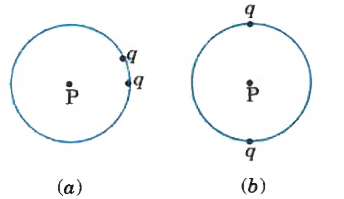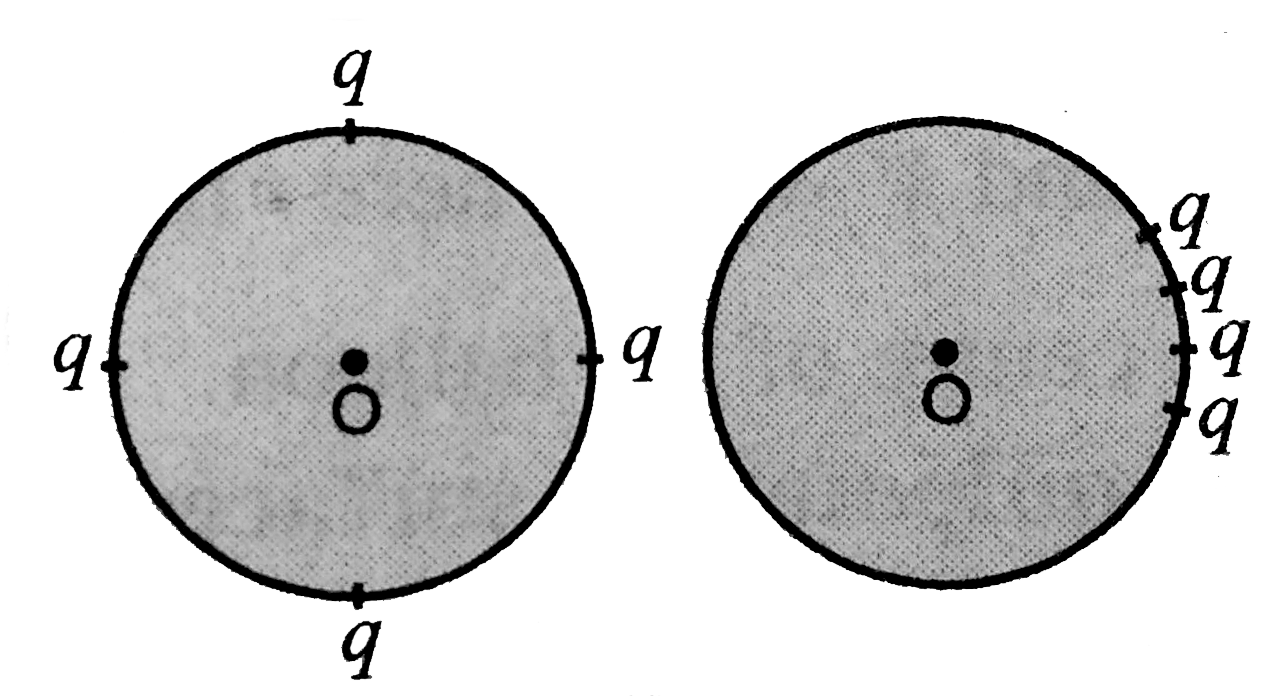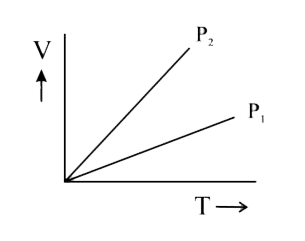The electric potential at a point P due to two charges in fig (a) is V1 and in fig (b) is V2. Consider the given object to be a ring. What is the relation between V1andV2? Explain your answer.

V1=14πε0(2qr) (where r is radius of rings)
V2=14πε0(2qr)⇒V1=V2
As electric potential is a scalar quantity it depends only on the distance of the charge from point (P) and not on the direction of the location of the point.
Topper's Solved these Questions
- ELECTROSTATIC POTENTIAL AND CAPACITANCE BOOK - MODERN PUBLICATIONCHAPTER - ELECTROSTATIC POTENTIAL AND CAPACITANCE EXERCISE - Revision Exercises (Long Answer Questions)
13 Videos
- ELECTROSTATIC POTENTIAL AND CAPACITANCE BOOK - MODERN PUBLICATIONCHAPTER - ELECTROSTATIC POTENTIAL AND CAPACITANCE EXERCISE - Revision Exercises (Numerical Problems)
25 Videos
- ELECTROSTATIC POTENTIAL AND CAPACITANCE BOOK - MODERN PUBLICATIONCHAPTER - ELECTROSTATIC POTENTIAL AND CAPACITANCE EXERCISE - Revision Exercises (Fill in the Blanks)
11 Videos
- ELECTROMAGNETIC WAVESBOOK - MODERN PUBLICATIONCHAPTER - ELECTROMAGNETIC WAVESEXERCISE - CHAPTER PRACTICE TEST
14 Videos
- MAGNETISM AND MATTERBOOK - MODERN PUBLICATIONCHAPTER - MAGNETISM AND MATTEREXERCISE - CHAPTER PRACTICE TEST FOR BOARD EXAMINATION
16 Videos
Similar Questions
Electric potential at a point 0 due to a number of a point charges equidistant from 0 si V1 when charges are uniformly distributed and it is V2 when charges are non uniformly distributed , Fig. Is V_(1) = V_(2) ? Justify.

View SolutionThe arrangement shows a part of complete circuit. The potentials at point A and B are V1 and V2 respectively . Find the potential at point P.

Strategy : The two capacitors C1 and C2 are connected in series . Therefore the charge on both of the capacitors is same . Let the potential at P is V .
View Solution
Knowledge Check
In V-T diagram shown in fig., what is the relation between P1andP2 ?
 AP2andP1BP2>P1CP1>P2DCannot say
AP2andP1BP2>P1CP1>P2DCannot sayIn an experiment of photoelectric effect the stopping potential was measured to be V1 and V2 with incident light of wavelength λ and λ2, respectively. The relation between V1 and V2 is:
AV2>2V1BV2<V1CV1<V2<2V1DV2=2V1A circuit has a section ABC if the potential at point A,BandC are V1,V2andV3 respectively , calculate the potential at point O
 AV1+V2+V3B[V1+V2+V3R1+R2+R3][1R1+R2+R3]−1CzeroD[V1+V2+V3R1+R2+R3](R1+R2+R3)
AV1+V2+V3B[V1+V2+V3R1+R2+R3][1R1+R2+R3]−1CzeroD[V1+V2+V3R1+R2+R3](R1+R2+R3)
The arrangement shows a part of complete circuit. The potentials at point A and B are V1 and V2 respectively . Find the potential at point P.

Strategy : The two capacitors C1 and C2 are connected in series . Therefore the charge on both of the capacitors is same . Let the potential at P is V .
View SolutionThe arrangement shows a part of complete circuit . The potentials at points A and B are V1 and V2 respectively . Find the potential at point P .

Strategy : The two capacitors C1 and C2 are connected in series . Therefore the charge on both of the capacitors is same. Let the potential at P is V.
View SolutionThe electric potential V at any point x, y, z in space is given by V=4x2V. The electric field at the point (1, 0, 2) is_________ V m−1.
View SolutionA circuit has a section ABC if the potential at point A,BandC are V1,V2andV3 respectively , calculate the potential at point O

View SolutionFind the change in electric potential energy , ΔU as a charge of (a) 2.20×10−6C. (b) −1.10×10−6C moves from a point A to a point given that the change in electric potential between these points is ΔV=VB−VA=24.0V
View Solution
